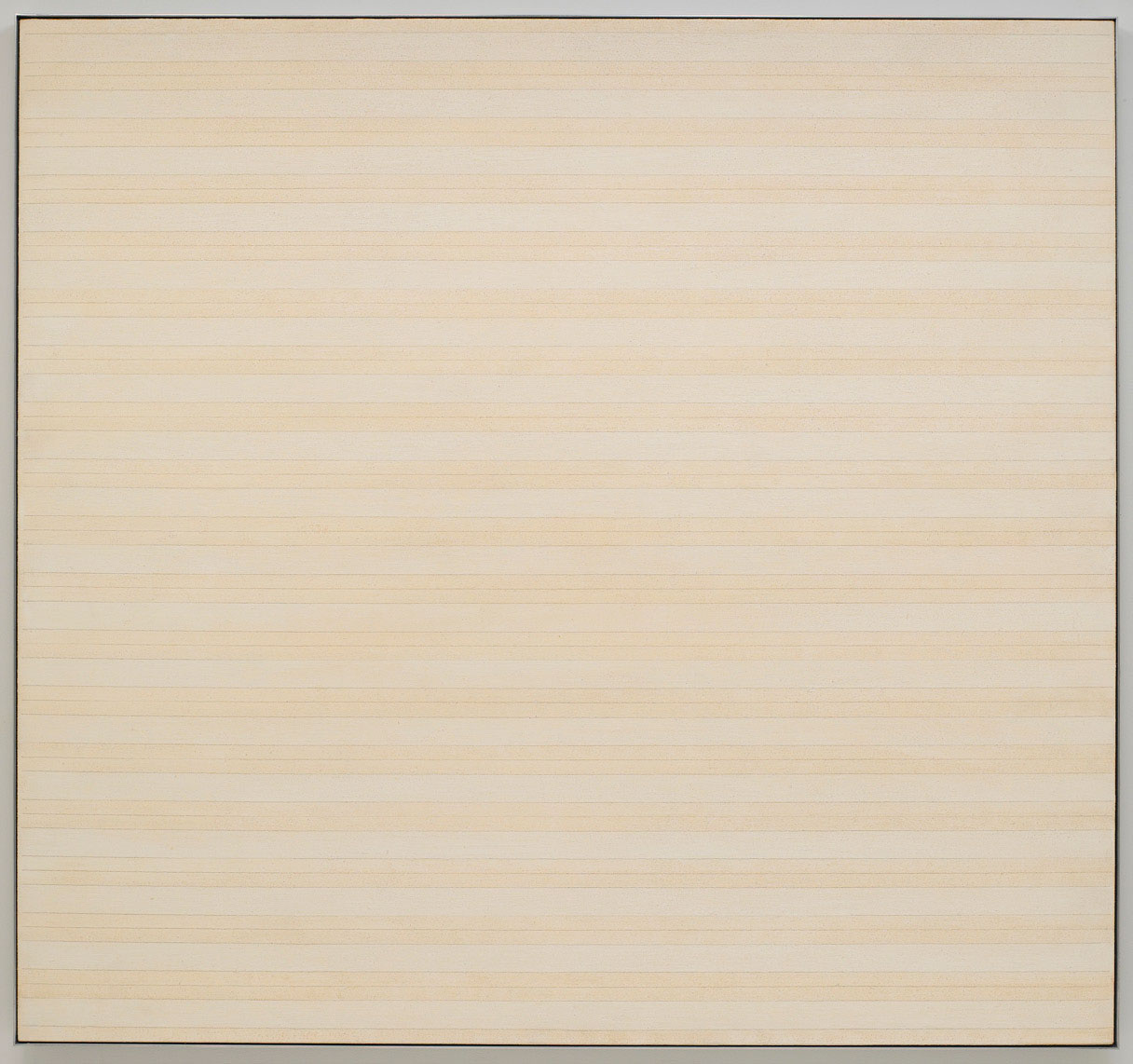ART CITIES:N.York-Agnes Martin
 Agnes Martin was one of the most influential painters of her generation. For a pivotal decade starting in 1957, Martin lived and worked in Coenties Slip, a neighborhood in lower Manhattan she shared with emerging artists including Ellsworth Kelly, before returning to New Mexico in 1968. Inspired by the transcendent qualities of paintings by Mark Rothko and Ad Reinhardt, Martin considered herself to be an Abstract Expressionist. Nonetheless, her oeuvre played a critical role in heralding the advent of Minimalism, influencing, among others, Eva Hesse’s sculptural practice and Sol LeWitt’s wall drawings.
Agnes Martin was one of the most influential painters of her generation. For a pivotal decade starting in 1957, Martin lived and worked in Coenties Slip, a neighborhood in lower Manhattan she shared with emerging artists including Ellsworth Kelly, before returning to New Mexico in 1968. Inspired by the transcendent qualities of paintings by Mark Rothko and Ad Reinhardt, Martin considered herself to be an Abstract Expressionist. Nonetheless, her oeuvre played a critical role in heralding the advent of Minimalism, influencing, among others, Eva Hesse’s sculptural practice and Sol LeWitt’s wall drawings.
By Efi Michalarou
Photo: Pace Gallery Archive
The “The Distillation of Color” is a monographic exhibition dedicated to the paintings of Agnes Martin, whose work left an indelible mark on the history of modern and contemporary art and has continued to inspire generations of artists. For Martin, painting was defined by an ongoing exploration of its capacity to express a vision of beauty born of intuitive inspiration. Featuring a range of paintings from the 1970s to the early 1990s, from Martin’s multicolored striped works, to compositions of color washed bands defined by hand-drawn lines, to the deep gray Black Paintings that characterized her work in the late 1980s, this exhibition examines Martin’s attentive use of color in each of these phases. Agnes Martin: The exhibition traces this evolution within the context of Martin’s broadening vision during the latter half of her career. Martin’s preoccupation with awareness is evident in the transitions she made in her work in the years following a five-year break from her studio which began in 1967. During this period, Martin left New York permanently, traveled across Canada and the United States, and eventually returned to New Mexico. Reflecting on this time in 1993, she said, “Sometimes nature calls you and says, ‘come live with me’. So I decided to experiment with the simple life”. When she returned to painting in 1972 after settling in Galisteo, New Mexico, she began to paint gessoed canvases in pale washes of primary colors, first in vertical bands, and later in horizontal bands. Martin’s pursuit of themes of beauty, happiness, and innocence in her non-objective art during this time was tied to her reverence of the open and expansive landscape that surrounded her. However, rather than depict this beauty through representation, Martin was interested in replicating her profound experience of its quiet solitude through abstract expression. Beginning in 1980, Martin’s compositions began to feature narrow horizontal bands in trios of primary hues, thinly painted in translucent shades of pink, blue, and yellow. These works, which she sometimes referred to as ‘candy stripe’ paintings, exude Martin’s quest for beauty in the rhythmic presence of undulating color. Other notable series of works during this time feature color field washes in alternating primary pastel colors or tones of single shades that offer the sense of open but defined space within horizontal graphite lines. Exemplifying an expansion in Martin’s approach to color, these works suggest Martin’s interest in new possibilities of perception and experience, toward a purity of expression. By 1983 Martin returned her focus to gray, distilling an approach to color grounded in the modesty of tonal shades—each a color in its own right. These works capture Martin’s continuous study of the phenomenological capacity of painting, exemplified in the otherworldly sense of light that emerges in each composition. During the late 1980s, Martin began a series of dark gray paintings, which she referred to as her Black Paintings. These works, composed of deep hues of rich and steely gray in variant intensities, are demarcated by contrasting shades of broad and thin bands. In contrast to her pale gray canvases, the Black Paintings convey a preternatural sense of gravity. To create the distinctly flat surfaces of these paintings, Martin mixed each dark gray tone with gesso paint to absorb light, offering a metaphysical sense of space and depth. Martin’s second near decade-long period exploring the subtleties of tone and texture in diaphanous gray and white compositions were interrupted in 1992 by two multicolor striped paintings, “Untitled #1” and “Untitled #2” of which “Untitled #1” is included in this exhibition. These works foreshadow Martin’s departure from her gray paintings and return to the exuberance of color that defined her work from 1994 until her death in 2004.
Photo: Agnes Martin, Desert Flower (1985), Acrylic and pencil on linen, 183.2 x 183.2 cm, © Estate of Agnes Martin / Artists Rights Society (ARS)-New York, Courtesy Pace Gallery
Info: Pace Gallery, 540 West 25th Street, New York, Duration: 7/5-26/6/2021, Days & Hours: Mon-Sat 10:00-17:00 (by appointment only, book here), www.pacegallery.com
